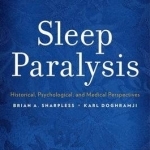Sleep Paralysis: Historical, Psychological, and Medical Perspectives
BookThis item doesn’t have any media yet
2015 | Medical & Veterinary
Sleep paralysis (characterized by an inability to move, conscious awareness in sleep, and vivid hallucinations) has a history that spans over two-thousand years. However, despite this expansive history, it is only in recent times that a scientific evidence base has accrued. The authors explore sleep paralysis from a range of historical perspectives, placing the phenomenon in a context relevant to clinicians and researchers. Dr. Brian Sharpless and Dr. Karl Doghramji's Sleep Paralysis: Historical, Psychological, and Medical Perspectives examines and synthesizes theoretical and empirical literature on sleep disorder. With a focus on phenomenology and prevalence of sleep paralysis, the book situates the disorder within cultural and historical contexts. Sleep paralysis is found to be a well-described, REM-based phenomenon with a number of known behavioral and psychological correlates. The authors compile and summarize the associated features, diagnostic issues, prevalence rates, and potential etiologies. The clinical ramifications of sleep paralysis are also thoroughly examined in this important text.
The authors evaluate the available assessment instruments, provide guidance on differential diagnosis, and compile what is known about its clinical impacts. Although a number of individuals are troubled by sleep paralysis, no empirically-established treatments are available. The authors present medication guidance and a brief five session cognitive-behavioral treatment (with a corresponding adherence measure and assessment instrument) for chronic cases.
Related Items:
| Published by | Oxford University Press Inc |
| Edition | Unknown |
| ISBN | 9780199313808 |
| Language | N/A |
Images And Data Courtesy Of: Oxford University Press Inc.
This content (including text, images, videos and other media) is published and used in accordance
with Fair Use.
